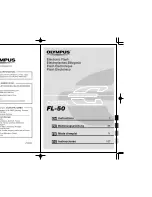
7
according to actual conditions.
●
The signal transmission cable must stay at least 50 m away from high voltage devices and high
voltage wires.
●
When laying cables outdoors, try to lay them under the eaves.
●
At open places, lay cables underground by means of hermetic steel tube, and then do
equipotential grounding to both ends of steel tubes. Laying overhead power cables are
prohibited.
●
At places with severe thunderstorms and induced voltage (like substation), you need to prepare
high-powered lightning protection devices and lightning conductors.
●
When laying cables and connecting lightning protection devices, you must comply with regional
laws and regulations.
●
You must do equipotential grounding to the electric system. The grounding device must meet
the requirements of anti-jamming and conform to your local electrical safety code. The
grounding device shall not form short circuit to N (neutral) line of high voltage power grid or be
mixed with other wires. When the electrical system is connected to the ground cable, the
impedance cannot exceed 4Ω and the cross-sectional area of the earth lead cannot exceed 25
mm
2
.
Figure 2-2 Installing lightning protection devices outdoors
Table 2-2 Installing lightning protection devices outdoors
No.
Description
1
Video lightning conductor.
2
Communication lightning conductor.
3
Power supply lighting conductor.
4
Impedance of the cable connected to the grounding wire should be less than 4Ω.
5
The radius is 60 m.
6
Lightning conductor.
7
Steel tube.














































